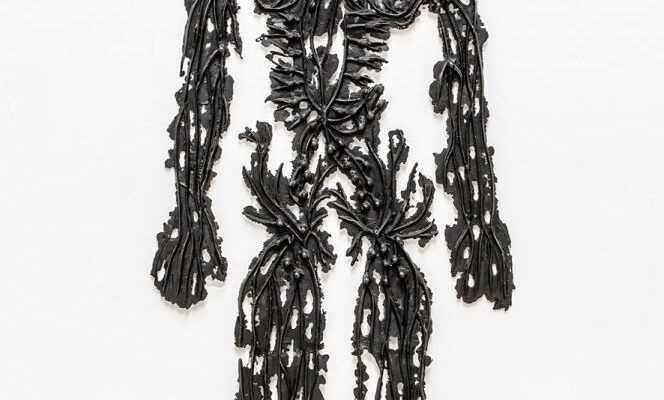They are more and more present in galleries and museums. No, not NFTs or even digital artwork. But many drawings. Yes, drawings, pencil on paper, where almost all the vocations of artists are born, and which are today more than ever in vogue. They can be found at the Drawing Now Art Fair, which takes place from June 10 to 13 in Paris, in the Temporary Residence Drawing Factory, launched by the same team near the Champs-Elysées. But also in galleries, with Massinissa Selmani at Anne-Sarah Bénichou or Kiki Smith at Lelong & Co.
Where does this sudden attraction for the line come from? From the crisis. Because, at less than 1,000 euros, the entrance ticket is as accessible as it is reassuring, especially for first-time collectors. “It is the counterpoint to a speculative market”, sums up Joana Neves, artistic director of Drawing Now Art Fair, a fair that has greatly helped popularize it. Its founder, Christine Phal, admits it: “In the big fairs, the stands cost 100,000 euros, which does not encourage galleries to present drawings at 1,000 euros. “
Work everywhere with little money
A few enthusiasts were already infatuated with this practice a good ten years ago, notably Florence and Daniel Guerlain, who created the Contemporary Drawing Prize, awarded this year to the artist Françoise Pétrovitch. To reinforce the Center Pompidou’s graphic art cabinet, the couple also gave him 1,200 drawings in 2013. “Drawing is intimate, a tête-à-tête with the artist”, insists Florence Guerlain. Better is “Be in the minds of artists and follow the path of their thought”, adds Franco-Moroccan Chourouk Hriech, who is exhibiting at Drawing Now.
“By dint of making itself small, the drawing did not attract the attention of authors like Théodore Adorno or Roland Barthes, it remained devoid of any conceptualization. »João Vilhena, cartoonist
It was by going beyond the frame that the designs also caught the attention of amateurs. At the Anne-Sarah Bénichou gallery, the graceful drawings of Massinissa Selmani, which recompose a world in constant imbalance, are thus extended in sculptures covered with pencil lines. Jonas Storsve, curator at Beaubourg, sees the eagerness of collectors as a need for “Handmade after the wave of photography and video”.
Beyond a wave or a vogue, drawing allows artists to work everywhere with little means. And reflects their way of being in the world. “It’s a form of lightness in the face of things, as if nothing were definitive or absolute, analyzes the Portuguese designer João Vilhena. I never had to think twice before picking up a pencil, because it remains a recreation, a game. “ And rarely an issue. The very discretion of this medium allowed him to escape the edifying role sometimes assigned to painting or sculpture.
“By dint of being small, the drawing did not attract the attention of authors like Théodore Adorno or Roland Barthes, it remained devoid of any conceptualization, continues João Vilhena. It’s like a deposit that has always been there, but that we hadn’t decided to mine. ”
Finally, Chourouk Hriech gives this resurgence a more philosophical scope, a desire to “To preserve the last written traces in the world, that of children as well as of the first men, of our ancestors and of our future, at a time when digital technology continues to cover everything at an astounding speed. ”
Drawing Now Art Fair, June 10-13.
Drawing Lab Paris website.
